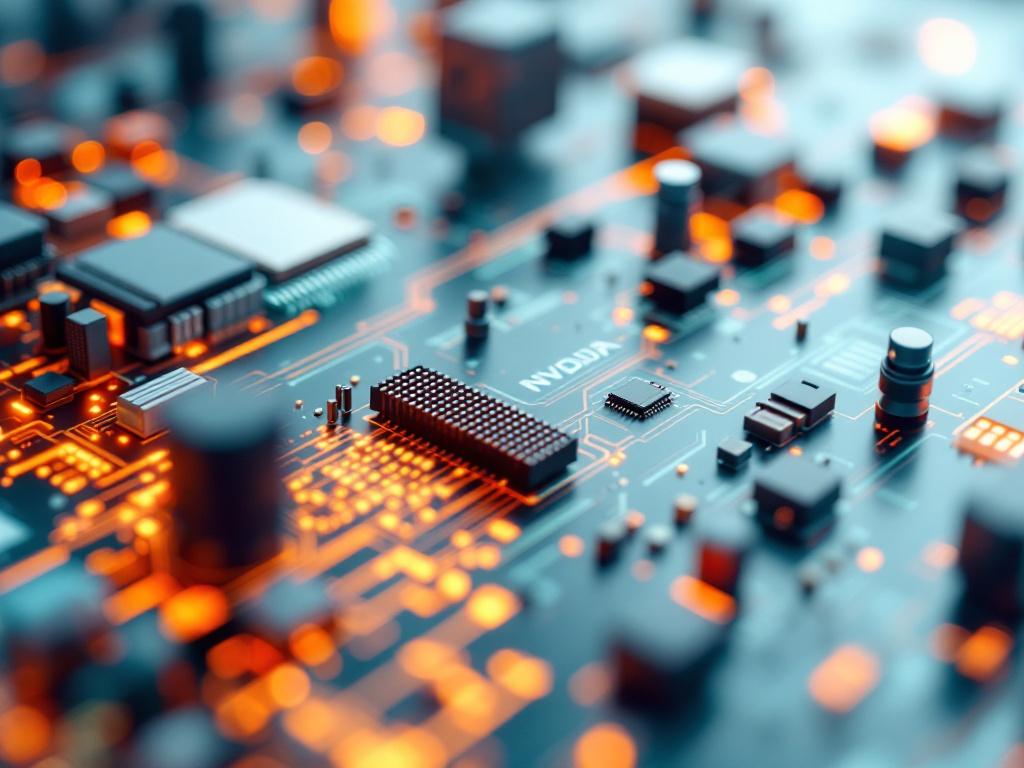UPDATE: In a groundbreaking assertion, Nvidia Corp. has declared itself a full “generation ahead” of Google in the heated artificial intelligence chip competition. This urgent announcement, reported by CNBC, intensifies the ongoing battle for supremacy in AI infrastructure as both tech giants invest billions to dominate the market.
Nvidia’s claim signals a critical shift in the dynamics of their relationship with major customers like Google, Microsoft, and Amazon. While these companies have long relied on Nvidia’s cutting-edge H100 and Blackwell GPUs, they are also racing to develop their own custom silicon, aiming to reduce reliance on Nvidia’s technology. However, Nvidia’s latest statements suggest it is unwilling to allow this competition to go unchallenged.
According to industry insiders, Nvidia’s confidence is rooted not only in superior raw performance but also in advantages related to memory bandwidth and networking. Custom chips like Google’s Trillium TPUs struggle to match Nvidia’s capabilities, especially as AI models grow increasingly complex, demanding faster data transfers between chips. As reported by The Wall Street Journal, the bottleneck in AI training has shifted from computational power to data communication speed, making Nvidia’s architecture critical for future advancements.
Nvidia’s recent announcement comes at a time when tech companies are under pressure to control costs. A Bloomberg report indicates that Google saves significantly on margins by investing in its own custom chips. However, Nvidia argues that the “time-to-intelligence” factor is far more crucial. If Nvidia’s clusters can train models three months faster than Google’s TPU pods, the cost savings from cheaper hardware may not outweigh the benefits of rapid deployment in an increasingly competitive market.
The supply chain is also a vital consideration. Despite controlling its own designs, Google faces the same manufacturing bottlenecks as Nvidia due to reliance on TSMC. By asserting a generational lead, Nvidia suggests that even if Google develops competitive chips, it cannot outpace Nvidia’s dedicated research and development efforts.
Moreover, Nvidia’s software ecosystem remains a formidable barrier. The CUDA platform is widely recognized as the industry standard, while Google’s alternatives struggle to find similar traction. Startups and enterprises continue to prefer Nvidia GPUs for their compatibility with existing software, while the engineering challenges of adapting to TPUs deter many potential users.
Investors and analysts are closely monitoring this escalating rivalry. Nvidia’s aggressive stance may be aimed at maintaining its historic gross margins, as any perception that Google’s TPUs can rival Nvidia’s offerings could undermine Nvidia’s pricing power. However, if Nvidia’s claims hold true, it will continue to command premium prices amidst rising demand.
This competitive landscape is not merely a battle of numbers; it has significant implications for the future of AI. As the industry evolves, experts anticipate a tiered system where Nvidia’s high-performance GPUs coexist with Google’s TPUs, which are optimized for routine tasks. While Nvidia currently leads in performance for demanding training runs, Google’s efficiency in daily operations is also noteworthy.
In this high-stakes environment, Nvidia’s proclamations underscore the growing importance of sustainable infrastructure in AI development. With Google poised to invest heavily in its custom silicon to keep pace, the gap may narrow, but Nvidia’s substantial lead may well dictate the terms of the future.
As the AI arms race continues, the world watches closely. The outcome could reshape the technological landscape and determine the next generation of AI innovation. For now, those looking to harness the power of AI must navigate a complex and rapidly evolving marketplace, where Nvidia’s technology remains pivotal.
